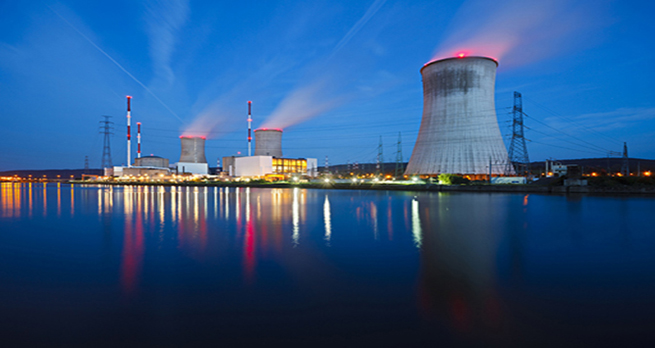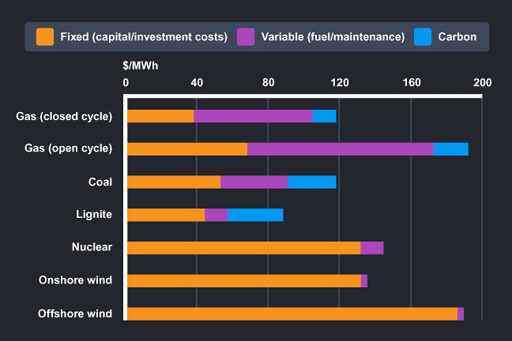4.1.4 The role of nuclear energy
In the current era, there are three main factors driving energy policy.
They are:
- climate change and the need to look for energy sources that reduce emissions of carbon dioxide into the atmosphere
- the finite supply of fossil fuels
- energy security and the need for countries to be able to supply their own energy with reduced dependency on other nations.
Given all of these factors, nuclear energy is given serious consideration.
How does nuclear energy fit the bill?
The graph in Figure 6 shows the cost of nuclear energy in comparison to other emissions and also an indication of the carbon emission status. Note that the costs are in US dollars per megawatt.
You can see that the running costs of nuclear power (shown in purple) compare favourably to those of other alternatives and once up and running nuclear power is very efficient. However, the cost of building nuclear power stations (in orange) is large. This means that if a government wishes to use nuclear power as a resource they need to commit to a large initial investment.
The initial outlay is comparable to renewable energy resources such as wind but still much more expensive than solar energy, for example. Some people feel that the money spent on nuclear energy is better spent elsewhere.
Carbon emissions are shown on the graph and while there may be some carbon emission involved in the construction of nuclear power stations, the process of fission itself has no carbon emissions.
Next, you will find out how plans have started to be implemented in the UK.

